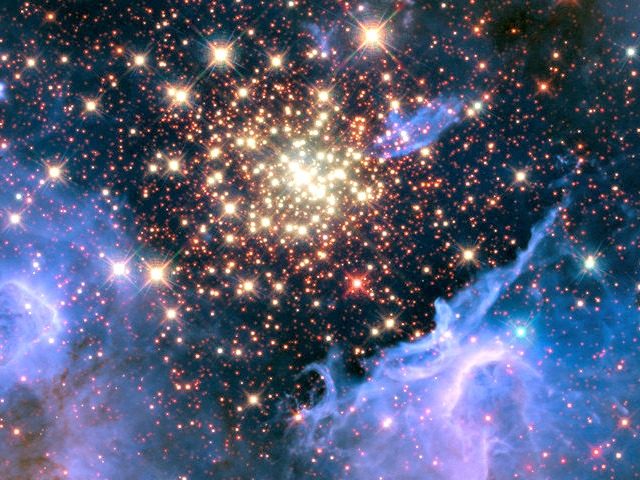In honor of our national Independence Day, NASA posted a picture of a brilliant scattering of young stars, “like a July 4 fireworks display.”

About 20,000 light-years from Earth, in the constellation Carina, a constellation of young stars glitters within a vast nebula. That cluster, dubbed NGC 3603, may have a clinical name, but its appearance is far more romantic. According to NASA, it’s serenity masks its true turmoil:
Appearing colorful and serene, this environment is anything but. Ultraviolet radiation and violent stellar winds have blown out an enormous cavity in the gas and dust enveloping the cluster. … These huge stars live fast and die young, burning through their hydrogen fuel quickly and ultimately ending their lives in supernova explosions.
But NGC 3603 is more than a curiously beautiful light show. In fact, it provides valuable astronomic information. NASA believes that studying the constellation will “provide important clues to understanding the origin of massive star formation in the early, distant universe.”
NGC 3603 was discovered by English astronomer and polymath John Herschel. He designated it a nebula in his Results of Astronomical Observations in 1847.

COMMENTS
Please let us know if you're having issues with commenting.